Title: Why Are The Ice Caps Melting? The Dangers of Global Warming Written by: Anne Rockwell Illustrated by: Paul Meisel Published by: Harper Collins, 2006 Themes/Topics: Global warming, the greenhouse effect, science, conservation Suitable for ages: 7-11 Let’s Read And Find Out Science, Stage … Continue reading
Add a CommentViewing: Blog Posts Tagged with: anne rockwell, Most Recent at Top [Help]
Results 1 - 7 of 7
Blog: Miss Marple's Musings (Login to Add to MyJacketFlap)
JacketFlap tags: Paul Meisel, Anne Rockwell, Perfect Picture Book Friday, greenhouse effect. teachers resources, WHAY ARE ICE CAPS MELTING The Dangers of global warming, picture books, nonfiction, Add a tag
Blog: First Book (Login to Add to MyJacketFlap)
JacketFlap tags: Kate DiCamillo, Harry Bliss, Anne Rockwell, Marjorie Weinman Sharmat, k-2, General, Book lists, Books & Reading, Marketplace, Authors & Illustrators, Alison Morris, Summer Reading, Lois Ehlert, Add a tag
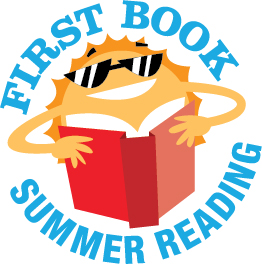 Learning may not be on the top of children’s minds as the weather gets warmer and school lets out — but studies have shown that without reading those two to three months put kids behind the next year in school.
Learning may not be on the top of children’s minds as the weather gets warmer and school lets out — but studies have shown that without reading those two to three months put kids behind the next year in school.
As we move into the long, hot days of summer, we’ll be sharing a new book list every week for a different age group featuring our in-house kid’s book expert Alison Morris’ picks for summer reading. So stay tuned every week for a new list of five books to keep kid’s minds active this summer!
This week we’re sharing the best summer reading titles for kids in kindergarten to 2nd grade.
Sign up to receive more great book lists, tip sheets and summer fun from First Book today!
If you work with kids in need, you can find these titles on the First Book Marketplace by clicking on the pictures of each book.
For Kindergarten to 2nd Grade
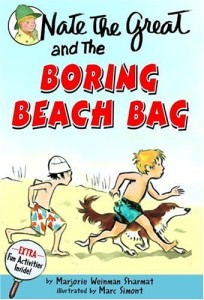 “Nate the Great and the Boring Beach Bag” by Marjorie Weinman Sharmat
“Nate the Great and the Boring Beach Bag” by Marjorie Weinman Sharmat
It’s gone! Oliver’s boring blue beach bag is gone. Inside are his clothes, shoes, and a special seashell. All he has left is his beach ball.
This is a perfect case for Nate the Great and his trusty dog Sludge. But they don’t find many clues in the sand and surf. What trail should they follow next? Follow the leader to find out!
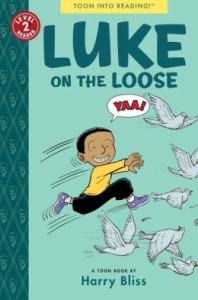 Luke on the Loose (Toon Books Level 2) by Harry Bliss
Luke on the Loose (Toon Books Level 2) by Harry Bliss
Luke looks on at the pigeons in Central Park, while Dad is lost in “boring Daddy talk,” and before you know it–Luke is on the Loose! He’s free as a bird, on a hilarious solo flight through New York City.
Harry Bliss, the renowned illustrator of many bestselling children’s books, finally goes on a solo flight on his own with a soaring story that will delight any young reader who has ever felt cooped up.
 Bink and Gollie by Katie DiCamillo
Bink and Gollie by Katie DiCamillo
Meet Bink and Gollie, two precocious little girls–one tiny, one tall, and both utterly irrepressible. Setting out from their super-deluxe tree house and powered by plenty of peanut butter (for Bink) and pancakes (for Gollie), they share three comical adventures involving painfully bright socks, an impromptu trek to the Andes, and a most unlikely marvelous companion. No matter where their roller skates take them, at the end of the day they will always be the very best of friends. Full of quick-witted repartee, this brainchild of Newbery Medalist Kate DiCamillo and award-winning author Alison McGhee is a hilarious ode to exuberance and camaraderie, imagination and adventure, brought to life through the delightfully kinetic images of Tony Fucile.
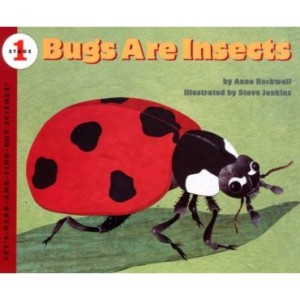 Bugs are Insects (Let’s-Read-And-Find Out Science Level 1) by Anne Rockwell
Bugs are Insects (Let’s-Read-And-Find Out Science Level 1) by Anne Rockwell
Is a spider an insect? Is a ladybug a bug? Lean how to tell what is an insect and what isn’t, and discover the fascinating world of the tiny creatures who live in your own backyard.
Wake up! It’s market day and everyone’s going to the town square. But this is no ordinary market; it’s a feast of folk art from around the world. Whether you’re looking for fruits, vegetables, or just an afternoon of fun, this is a shopping trip you don’t want to miss!
The post First Book’s Summer Book List: K-2 appeared first on First Book Blog.
Blog: THE WAY TUGEAU (Login to Add to MyJacketFlap)
JacketFlap tags: children's Books, reviews, Book Launch, melissa iwai, anne rockwell, Agency News, Image Share, industry tips, Artist Agent tips, Add a tag
I was just catching up with my HORN BOOK reading…love that magazine…. and noticed that Melissa Iwai has a nice review in the Sept Oct edition for TRUCK STOP, written by Anne Rockwell from Viking. It’s a lovely story about noticing and caring, but is a must for any young truck lover! “Iwai’s mixed-media collage art uses texture, bright colors, and a variety of perspectives to draw readers in.” It’s an honor to get a review in Horn Book. Book deserves it….. Hope you’ll check it out. 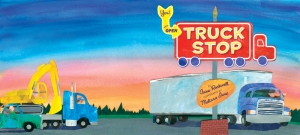
Melissa’s also been busy doing signings…one today at Books of Wonder in fact! (NYC…favorite book store!) And these will include the new full length board book of B IS FOR BULLDOZER written by June Sobel from Houghtin Mifflin Harcourt. It’s been a trade book since 2003 but this is new….lovely to see new editions keeping a good book in print longer. Again, for the truck loving child it’s such fun!
And if you haven’t yet visited Melissa Iwai’s blog THE HUNGRY ARTIST you are missing good food and insider artist tips….yummmm…..
Blog: got story countdown (Login to Add to MyJacketFlap)
JacketFlap tags: Greg Christie, A Countdown Quickie, Real life stories about illustrators, Bill Traylor, real stories for picture books, 01a | Meet Anne Rockwell, 07 | With R. Gregory Christie, "It Jes' Happened", being the author without illustrating, career planning children's book creation, interview, Don Tate, Anne Rockwell, Add a tag
It’s a unique opportunity when an illustrator can also write stories that other artists can render. This happened to Don Tate when he wrote It Jes’ Happened, illustrated by R. Gregory Christie.

Check out this excellent discussion between Anne Rockwell and Don Tate, at Anne’s site.
“…While I could have illustrated the story, my illustration styles weren’t the perfect match for the text. My editor wanted the art to be edgy, gritty. I wanted to go with an illustrator who had broader name recognition than myself. Greg Christie became one of our top choices.”—Don Tate

Original art by Bill Traylor
Remember this if you encounter a book editor who loves your story, but suggests that another illustrator provide the art. Don’t insist on all (doing both story and pictures) or nothing.
If a publisher is seriously interested in acquiring one component, make sure to ask why. Decisions like these are made for the good of the project.
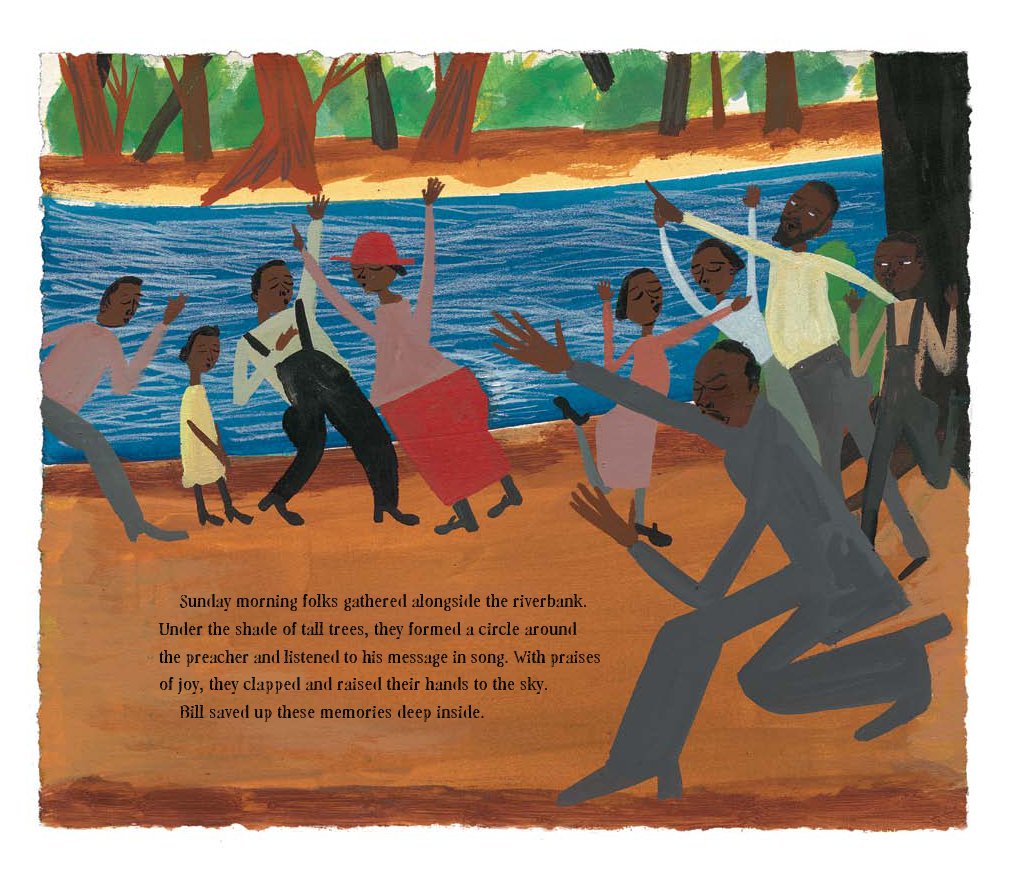
Art from “It Jes’ Happened” by Greg Christie click to enlarge
Editors want your book to sell as many copies as possible. One practical consideration is name recognition. Newcomers tend to forget that buyers invariably prefer to request a familiar name or brand, when they shop, even in bookstores or libraries. Publishers also need to see how your name fares out there initially, in the mutual interest of nurturing a new career for the long term.
Blog: American Indians in Children's Literature (Login to Add to MyJacketFlap)
JacketFlap tags: Anne Rockwell, bias, Add a tag
Yesterday, I posted initial thoughts about Anne Rockwell's picture book biography of George Washington. I'm returning to it today, and will do so again later this week.
In yesterday's post I wrote about the word shared and how Rockwell uses it in two of her books, and I wrote about the persistence with which writers put American Indians in the same sentence as animals.
Today, I want to look at the opening paragraph in the book.
Three hundred years ago, there was no United States of America. Instead, there were thirteen English colonies in North America.I'm focusing on that paragraph to show you how bias looks and what it teaches.
Anne Rockwell is a prolific writer. Though I've not studied her picture books for very young children, I can see by perusing the titles, that an early childhood teacher would use many of them.
How might her biography look if the focus was George Washington and his interactions with American Indians? That's not the book she wrote, so, some may deem it unfair to criticize her treatment of American Indians and American Indian history. Her first sentence is
Three hundred years ago, there was no United States of America.Rockwell's book was published in 2008. Three hundred years ago puts the story in the year 1708. Rockwell is correct. At that point in time, there was no United States of America. Her next sentence could be "Instead, there were hundreds of Native Nations." But this is her next sentence:
Instead, there were thirteen English colonies in North America.That sentence is also correct. In 1708, there were thirteen English colonies in North America. But! I'd insert an additional sentence, and, I'd rewrite her sentence so that the paragraph would say "Europeans who had fled Europe had come to North American and were occupying the lands that belonged to the Native Nations. These Europeans set up thirteen English colonies."
You following that? I'll put it here, in clean copy. Here's Rockwell's opening paragraph, followed by my rewrite of her opening paragraph:
Three hundred years ago, there was no United States of America. Instead, there were thirteen English colonies in North America.See the difference? See how she shapes the story with her choice of what to say and how to say it? She's telling this story from her point of view as an American. I'm revising her story from the point of view of an American Indian. Her statements are factually true. So are mine.
Three hundred years ago, there was no United States of America. Instead, there were hundreds of Native Nations. Europeans who had fled Europe had come to North America and were occupying lands that belonged to the Native Nations. These Europeans set up thirteen English colonies.
But, she avoids telling her readers that the birth of the United States was complicated. She keeps some information from her readers, and as we saw yesterday, she presents bears, wolves, and, American Indians as something George wasn't afraid of.
She's creating an image for her readers. In that image, American Indians are animal-like and living in the woods. The Indians she presents are not civilized, living in colonies like the Europeans.
But, her presentation is not true! American Indians were, in fact, highly developed, self-governing societies. They had leaders with whom Washington and the like had diplomatic negotiations with. She is concealing that information from her readers. Being generous, I can say that she probably does not know she's doing that. It isn't a deliberate decision.
[Personal note: I grow weary and angry at myself for constantly saying "Native people were not primitive." But, that false idea is so well taught in America that it needs to be said again a
Blog: American Indians in Children's Literature (Login to Add to MyJacketFlap)
JacketFlap tags: stereotypes, Anne Rockwell, bias, Add a tag
My first impressions of Anne Rockwell's biography of George Washington...
Several years ago, Anne Rockwell wrote a book called Thanksgiving Day. Reading it as a Native mother and professor in American Indian Studies, her book is a mess. She seems not to know that a lot of American Indian people call that day "Thankstaking" or "A day of mourning." In her book, one of her characters says (bold is mine):
Michiko was thankful that she and all the other Pilgrims were greeted kindly by the Wampanoag people, who shared the land with them.
Last year, that word "shared" appeared in her picture book biography, Big George: How a Shy Boy Became President Washington. On the opening page, she writes (bold is mine):
Three hundred years ago, there was no United States of America. Instead, there were thirteen English colonies in North America.
In the one called Virginia, a tall boy loved to get on his horse and gallop through the woods alone. He wasn't afraid of bears, or wolves, or the native hunters with bows and arrows who shared those woods.
Sharing is a big part of what we teach children in early childhood classrooms. Hence, the sharing aspect in both of these books work well in those settings. Course, in those settings we're talking about a toy, or a book, or a special chair. Rockwell is talking about something else completely. The land and woods she's referring to are not the same thing as a toy, or a book, or a special chair.
Note that in the Thanksgiving Day excerpt above, Rockwell says the Pilgrims were greeted "kindly" by the Wampanoag people. In text and illustration of the book, it looks like the Pilgrims and Wampanoags were great friends! Course, by then, the historical record shows, the Wampanoags were familiar with the ways of the Europeans.
In Big George, Rockwell tells her readers that the woods are dangerous... The young George has to be mindful of bears, wolves, and Native hunters with bows and arrows. Putting Indians-to-be-feared in the same sentence as animals-to-be-feared is a common thing for writers to do. It is, however, a problem, because it equates Indian people with animals. Laura Ingalls Wilder did it, too, in Little House on the Prairie way back in 1935, but Rockwell repeats that error 74 years later. When will that stop?
Let's look at the sentence again...
He wasn't afraid of [...] the native hunters with bows and arrows who shared those woods.
Doesn't make sense, does it? Why should he be afraid of Indians who share the woods with George?
More later...
Blog: The Children's Book Review (Login to Add to MyJacketFlap)
JacketFlap tags: Magic Tree House, Ages Four to Eight: Books for pre-school to second grade, Ages Nine to Twelve: Books for third through sixth grade, Book Lists: Specialty picks, Seasonal: Holiday Events, Cultural Wisdom: Books that teach, Anne Rockwell, Lizzy Rockwell, Mary Pope Osbourne, Natalie Pope Boyce, Travel, Add a tag
From shamrocks to leprechauns to fiddle music to the color green, these three books have St. Patrick's Day (March, 17) covered.
Add a Comment


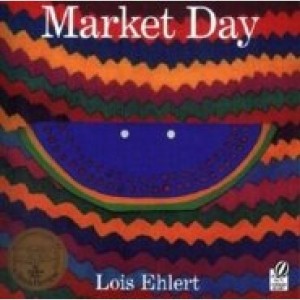
Thanks for the shout out, Chris!
It was an amazing day — I met Betsy Lewin and Doreen Cronin and Chris Raschka, all of whom I’m in awe of — so honored to be included in the group.